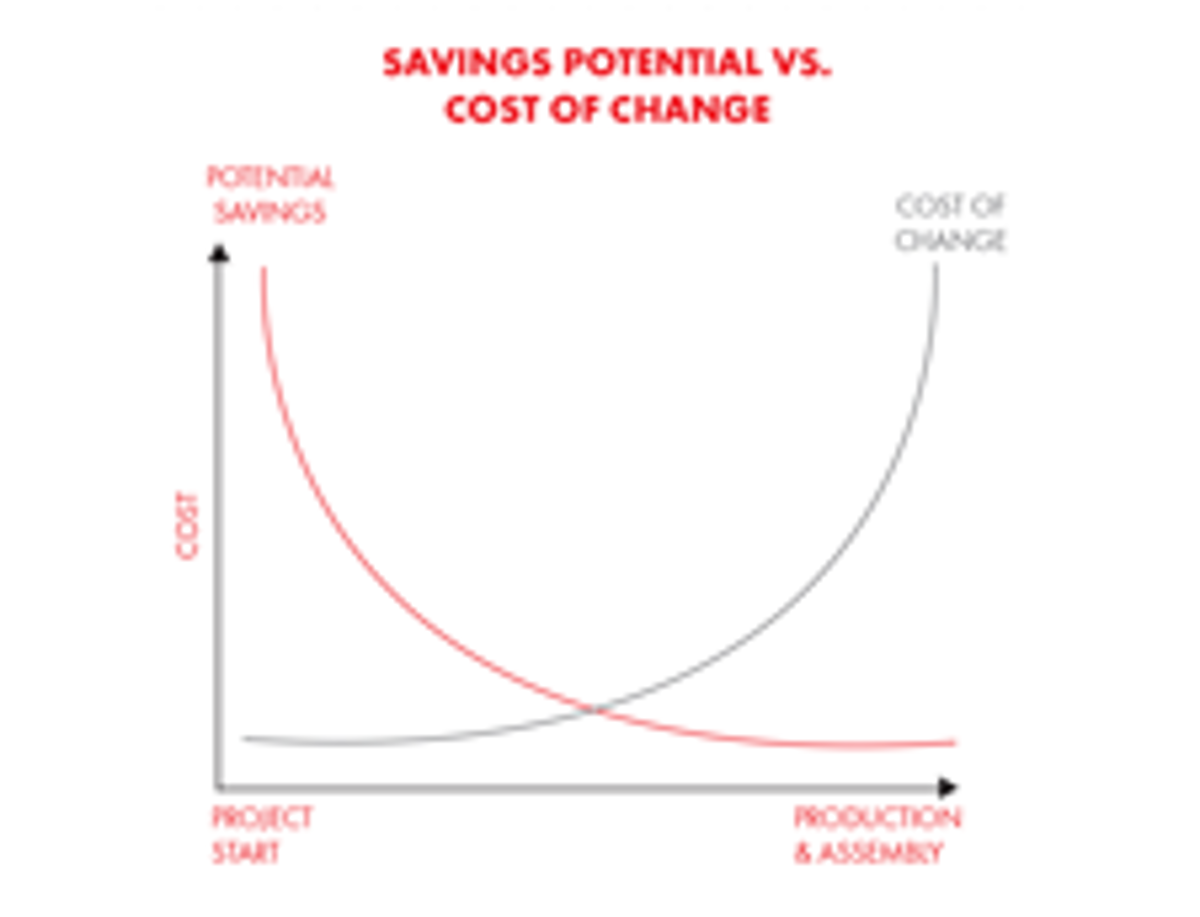New Product Design—Why It's the Best Time to Evaluate Your Fastener Application
Fasteners can easily be overlooked in the design process. However, evaluating fasteners and their application during the Conceptual and R&D stages can make a profound impact in your project’s success. The figure outlines the cost impact of making changes throughout the production cycle. By including our engineering experts during the design and development phase, Würth can increase your ability to deliver a product at both the lowest cost and maximum quality.
Würth’s Engineering Expertise Can Assist In New Product Development
- Proper design and selection of fasteners can reduce product and assembly costs.
- Drive down the piece price costs of components by eliminating costly manual operations such as applying thread-locker or tapping.
- Würth’s Engineering team follows non-disclosure protocols and proprietary restrictions.
CASE STUDY
The smallest part can spur success or disaster.Involving fastener engineers at the design phase can prevent costly failures and save millions.
It seemed like a great idea: Switch to a more durable plastic for a component in an assembly that experiences high vibration. Unfortunately, the customer quickly learned the tri-lobular screw used in this assembly cracked the new material.
Since the plastic material was new, the supplier was consulted. The supplier recommended changing to a screw with a twin-lead sharp-thread, commercially known as a High/Low Screw. Without consulting with the Würth Industry North America (WINA) engineering team, the change was implemented and product produced without any additional concerns on the assembly line where it was applied manually using screw guns. Everything seemed fine until the finished product began to fail in the hands of the consumer. The screws backed out, and the joint loosened in the high-vibration assembly. The consequences were immediate and, ultimately, expensive. Product was returned to dealers for repair, customer satisfaction declined due to downtime and related annoyances, and warranty costs soared. As failure rates rose, the company had no choice but to issue a product recall.
The problems with the new material and the original screw and its replacement were brought to the attention of a Würth engineer. He quickly identified the cause of the failure and explained the recommended twin-lead screw was acceptable for the new plastic material, but not correct for the application. Twin-lead screws are prone to back-out in high-vibration assemblies due to the thread’s steep helix angle. The plastic material supplier gave a good recommendation for the material but knew nothing about the dynamics of the total assembly. In this case, the Würth engineer suggested a screw that would meet the needs of both the material and the application, and it has now performed satisfactorily for several years in this application. The multi-angle, single-lead thread design screw prevents both material cracking and screw back-out.
Würth’s engineering team had the knowledge to evaluate the situation and recommend the right product for both the material and the application. “This incident cost our customer millions of dollars in product recall expenditures, which could have been avoided by involving Würth engineering on the front side of the design change,” says Randy Lammers, technical application specialist, Würth Industry.
He explains, “The Würth engineering team learns and understands the customer’s final products and helps achieve the highest integrity design of the complete assembly. As a result, Würth continuously saves its customers thousands of dollars with part change and manufacturing efficiency suggestions.” Maximum savings occur when Würth works closely with customer design engineering teams from the outset and whenever changes are made to ensure the best joint and fastener assembly is specified for the application.
The Results
So how much can be saved when Würth works with your design engineers? If you ask this customer, the answer is, “MILLIONS OF DOLLARS.”
Contact a Würth engineer for an evaluation and assistance with your new product design. Contact Us


